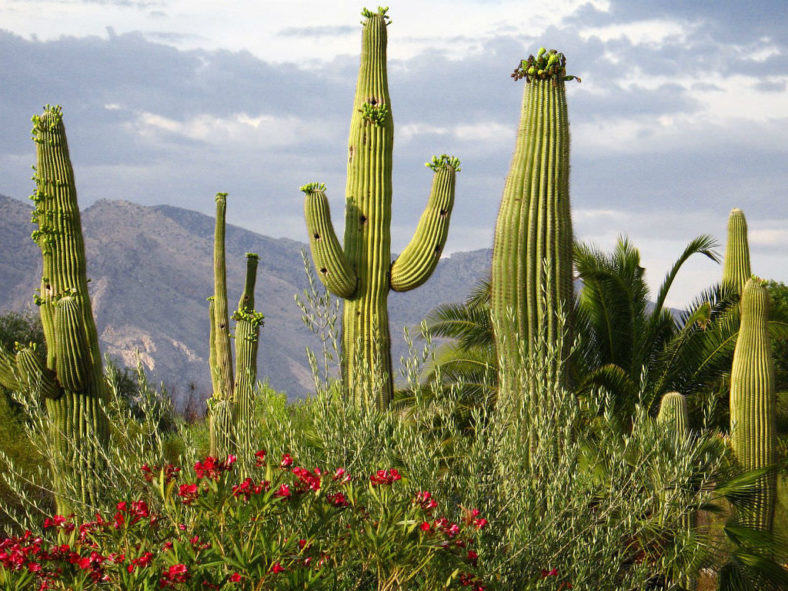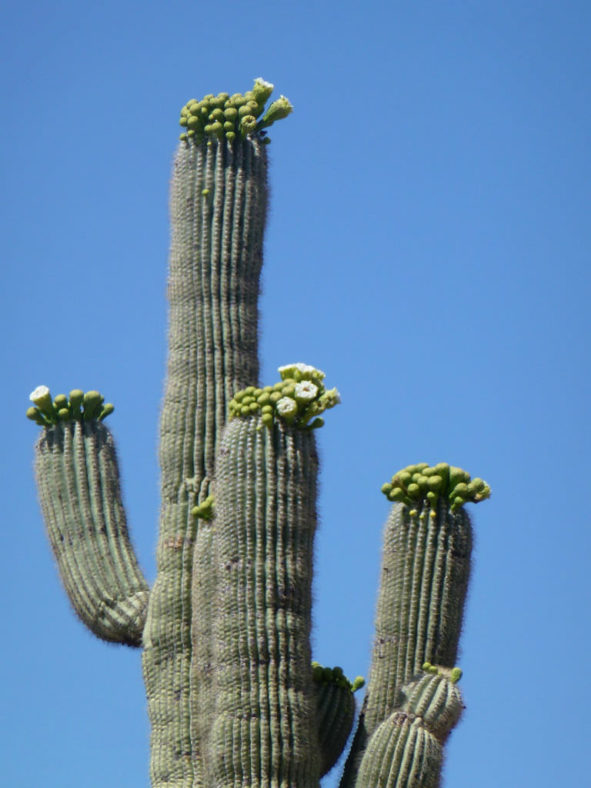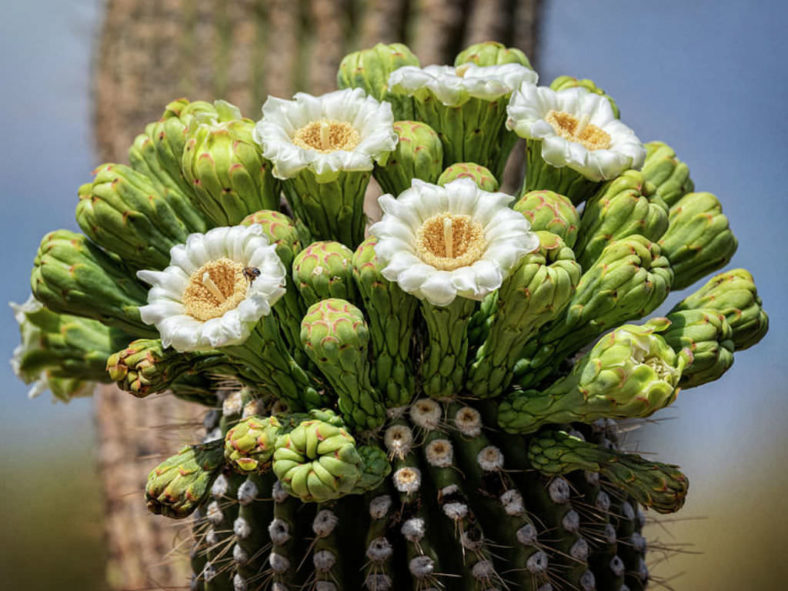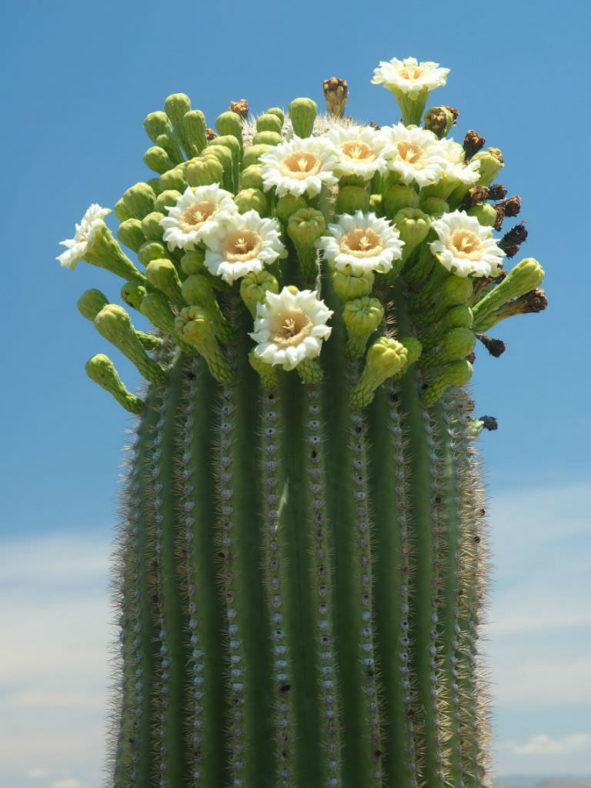Scientific Name
Carnegiea gigantea (Engelm.) Britton & Rose
Common Name(s)
Saguaro, Saguaro Cactus, Sahuaro, Giant Cactus, Sage of the Desert
Synonym(s)
Cereus giganteus, Pilocereus engelmannii, Pilocereus giganteus
Scientific Classification
Family: Cactaceae
Subfamily: Cactoideae
Tribe: Pachycereae
Genus: Carnegiea
Etymology
The specific epithet "gigantea" (pronounced "jy-GAN-tee-uh") means "giant" and refers to the impressive size of this species.
Origin
Carnegiea gigantea is native to the Sonoran Desert in the United States, specifically in Arizona, as well as in the Whipple Mountains and Imperial County areas of California, and the Mexican state of Sonora.
Description
Carnegiea gigantea is a tree-like cactus with a ribbed stem that can grow up to 65 feet (20 m) tall and up to 2.5 feet (75 cm) in diameter. It is the largest columnar cactus native to the United States, but it is extremely slow-growing, reaching only 0.25 inches (0.6 cm) in height after two years. It flowers once it has reached about 30 to 35 years of age and has a height of about 6.6 feet (2 m). The first branches appear after reaching a height of about 16.5 feet (5 m) and an age of 50 to 70 years.
The flowers are white and appear just below the top of the stem. They can reach a length of 5 inches (12.5 cm) and a diameter of 2.4 inches (6 cm). The fleshy, edible fruits are red and can grow up to 3 inches (7.5 cm) long.
The Saguaro blossom is the State Wildflower of Arizona.

Forms of Carnegiea gigantea
How to Grow and Care for Carnegiea gigantea
Hardiness: USDA hardiness zone 8a to 11b: from 10°F (-12.2°C) to 50°F (10°C).
It is not legal to procure a Saguaro Cactus for home cultivation by digging it out of the desert. Beyond that, mature Saguaros almost always die when transplanted.
Saguaro Cactus babies grow under the protection of nurse trees. The cactus will continue to grow, and its nurse tree will often expire. It is thought that the cactus may cause the nurse tree to die by competing for resources. The nurse trees shelter Saguaro Cactus babies from the sun's harsh rays and disperses moisture from evaporation.
Saguaro Cactus must grow in well-drained, gritty soil and receive low water levels, with the soil drying completely between waterings. In spring, fertilizing with cactus food will help the plant complete its growth cycle.
Common cactus pests, such as scale and mealybugs, will require manual or chemical controls.
Links
- Back to genus Carnegiea
- Succupedia: Browse succulents by Scientific Name, Common Name, Genus, Family, USDA Hardiness Zone, Origin, or cacti by Genus
Photo Gallery
Click on a photo to see a larger version.


